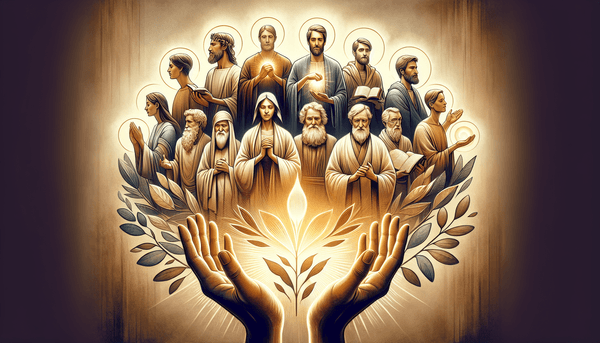Lessons in Faith and Healing from Acts 3
In Acts 3, we witness the power of faith in Jesus' name through the healing of a man lame from birth. Peter, filled with the Holy Spirit, commanded him to walk in the name of Jesus Christ of Nazareth. Instantly, the man's feet and ankles became strong, and he began to walk, then jump, and finally praise God (Acts 3:6, Acts 3:8). This miracle provided a platform for Peter to boldly proclaim the gospel, urging the people to repent and turn to God so that their sins may be wiped out (Acts 3:19). Through this story, we learn the importance of faith in Jesus' name and the transformative impact it can have on our lives, both physically and spiritually. We also see the power of seizing opportunities to witness the grace of God, as Peter did when faced with the gathered crowd.
Conclusion
The lessons gleaned from Acts 2 and 3 reach beyond their historical context to resonate with us today. They remind us of the Holy Spirit's power at work within the early church and encourage us to embrace that same power in our lives. Through faith in Jesus Christ, we too can experience renewal and be bold witnesses of His love. As we navigate modern challenges, let these chapters inspire us to approach each situation with wisdom, grace, and a deep-rooted love for our neighbors, mirroring the unity and growth that characterized the first believers. For a broader context on living a life that honors God, consider exploring how to honor God and live a holy life.
FAQ
Q: What is the meaning of Acts 2?
A: Acts 2 describes the coming of the Holy Spirit on the day of Pentecost, empowering the disciples to speak in different languages and proclaim the gospel to various nations. Peter delivers a sermon calling for repentance and baptism, resulting in about three thousand people joining the early Christian community. This chapter signifies the start of the gospel's spread and the birth of the Christian church.
Q: How can I apply the lessons from Acts 2 to my life?
A: From Acts 2, you can apply the empowerment of the Holy Spirit in your life to overcome barriers and unite with others in proclaiming the gospel. Emulate the early Christians in their devotion to fellowship and prayer, and be open to the transformative work of the Spirit.
Q: What can I learn from Acts 3?
A: Acts 3 teaches the importance of faith in Jesus Christ and the power of His name. The healing of the lame man by Peter and John exemplifies the miraculous possible when we act in faith. Peter's boldness in preaching also encourages you to be courageous in sharing the gospel.
Q: What is the meaning of Acts 1?
A: Acts 1 details the events following Jesus' resurrection and before His ascension. It sets the stage for the coming of the Holy Spirit and the spread of the gospel to the ends of the earth. It also recounts the selection of Matthias to replace Judas Iscariot as one of the apostles.






